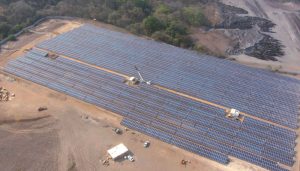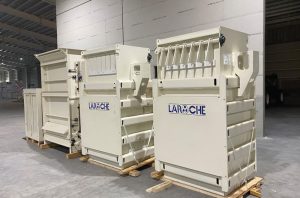
The western hemisphere textile industry continues to hear the promise of reshoring, but exploring the practical, rational and non-monetary implications is complicated.
By Jim Borneman, Editor In Chief
Reshoring or near-shoring textile and apparel supply chains to the United States and Western Hemisphere really isn’t a new topic. For many years, Western Hemisphere groups have tried to make a case for sourcing close to where products will be sold. Even when exploring the total cost and speed-to-market issues, cost often worked against sourcing close to home and was maligned as protectionist as retailers and brands searched for the latest “cheap needle.”
Free Versus Fair Trade
In the past, promotion of Western Hemisphere-focused supply chains often devolved into trade law debates labeling Western Hemisphere promoters as protectionists — or fair-traders — and global sourcers as globalists — or free-traders — that wanted to let the market speak for itself.
For many years, these debates surfaced with every discussion of a new free-trade agreement (FTA), regional trade agreement — such as the Caribbean Basin Initiative (CBI), Caribbean Basin Trade Partnership Act (CBTPA), North American Free Trade Agreement (NAFTA), Dominican Republic-Central America Free Trade Agreement (CAFTA-DR) and United States–Mexico–Canada Agreement (USMCA) — and even the ascent of China into the World Trade Organization (WTO).
The apparently emotional argument that global sourcing would lead to supply chain vulnerabilities was only envisioned in the supply of goods to the U.S. Department of Defense (DoD).
The Berry Amendment was formed to insist that purchases to supply US military personnel would consist of 100-percent Made-in-America product, diminishing the DoD’s reliance on foreign supply chains.
Enter COVID-19: Vulnerabilities Exposed
When the COVID-19 pandemic took hold in 2020, it really didn’t take very long to to see how exposed Americans were because of the lack of domestic production and manufacturing of an array of goods.
Things most people rarely thought about were now essential items — N-95 masks and other personal protective equipment (PPE), swabs for tests, ventilators, and the list goes on.
As consumers moved through the pandemic, supply chain disruptions came into focus with shipping issues, component shortages and lockdowns crippling labor and even threatening Christmas.
Time For A New Discussion
With the supply chain challenges top of mind, maybe it is worth considering a look at the promise of re- or near-shoring. With a focus on exploring the practical and rational implications at play and acknowledging the world has truly changed, the economics of trade need to be reimagined. Energy prices, shipping expenses, time-on-the-water — or the cost of speed-to-market — investment in downstream supply and infrastructure all are under examination.
The Rise Of Non-Monetary Social Costs
If phrases like traceability, circularity, forced labor, slave cotton, green manufacturing, sustainability, carbon footprint, fair labor practices are entering a sourcing decision-making-process, then factoring them into the re- or near-shoring calculation is essential. The challenge of considering non-monetary factors in a costing model has always been an issue of the product’s total cost — even valuing the cost effect of sustainability in a pre-COVID sourcing world or time-on-the-water as a cost of speed-to-market.
Investments In Central America Are Happening
As previously reported by Textile World, significant investments are occurring in Central America in support of near-shoring.
Miami-based Intradeco Holdings announced investments of more than $100 million in three major projects in Central America to make the most of CAFTA-DR and nearshoring opportunities, advance full circularity, and expand solar power. Its first project is the Central American Spinning Works, a state-of-the-art ring spinning mill in Honduras that began operations earlier this year. The second project is the creation of a manufacturing plant in El Salvador that uses 100-percent recycled yarns — both cotton and man-made fibers. A third project will allow the company to expand its solar energy power to attain 30 megawatts by the third quarter of 2022.

“[Our] announcement is consistent with our 40 years of innovation and service which comes with being an integral part of the textile, apparel, and retail industries,” said Intradeco Chairman Felix Siman. “With our comprehensive distribution channels and state-of-the-art supply chain, we can reach our customers in an efficient and cost-effective manner in the shortest time possible. Intradeco is a founding member in The HUGE (Honduras, USA, Guatemala, El Salvador) Business and Investment council. Through these investments, our company is helping to create more than 1,000 jobs in Central America, while contributing to the region´s environmental sustainability objectives.”
Also reported recently by TW: “Gastonia, N.C.-headquartered Parkdale Mills, one of the largest manufacturers of spun yarn and cotton consumer products in the world, will make a multi-million-dollar investment in a new yarn spinning facility in Honduras and make an additional substantial investment to support existing operations in Hillsville, Va. This investment will help customers shift 1 million pounds of yarn per week away from supply chains in Asia and China and enhance U.S. and CAFTA-DR co-production resilience and increase regional product offerings. Parkdale’s announced investment will create hundreds of jobs in Honduras and further support hundreds of employees in Parkdale’s Hillsville operations.”
“Parkdale’s investments will support good paying jobs in the United States and in the Central American region and significantly increase our extensive product offering and capacity, including the production of sustainable specialty yarns,” noted Parkdale’s Chairman and CEO Anderson Warlick.
Future Trade Differences Could Undermine Efforts
As previously stated, trade activity always seems to breed challenges and uncertainty to existing trade agreements. As consideration of nearshoring continues there is no doubt that the basic principles that underlie existing trade agreements will be reexamined and relitigated with all parties seeking an advantage. This can be destabilizing for those taking nearshoring and the investments necessary to perform at the highest levels and deliver a revitalized nearshoring supply chain seriously.
Look for the “yarn-forward” rule of the CAFTA-DR agreement to come under attack. Simply put, to ship a CAFTA-DR member country-made product into the United States duty free, it must be made from U.S.-made or indigenous yarn — yarn made in the CAFTA-DR member country of the product’s origin. This really disincentivizes importing Asian fabric — not made with U.S. or indigenous yarn — into CAFTA-DR countries to be made into garment for export to the United States because such products cannot enter duty free.
Herndon, Va.-based Werner International released a report in January 2022 titled, “The Economic and Societal Impact of the Yarn Forward Rule on CAFTA-DR Signatories.” The report is certainly worth the read if nearshoring or investment in the nearshoring supply chains is part of your business strategy.
Duty Free Matters
Access to the U.S. market “duty free” is the reward for most trade agreement compliance. But for most in the industry, it simply means a price advantage compared to competing imports. The Werner International report provides some interesting benchmarking data that illustrates the effect of duties on landed duty paid U.S. prices of several garments made in China compared versus the same garments made by CAFTA-DR members in Honduras.
Werner compared a men’s 100-percent cotton basic T-shirt, a men’s 100-percent polyester active T-shirt, men’s five pocket cotton jeans and women’s trousers with a fiber content of 96-polyester/4-percent lycra (See Table 1).

According to the Werner evaluation, the “… table [located on page 17 of the report] shows the outcome in terms of the ex-factory price for each garment produced, the import duties paid into the U.S., and the final price, including duties paid, freight, and insurance costs.
“As the table … demonstrates, duty-free access to the U.S. market makes CAFTA-DR countries globally competitive for the U.S. market across the spectrum of apparel products. The duty-free access and close proximity to the U.S. market along with a strong, integrated coproduction chain are the inherent advantages of the US-CAFTA-DR trade relationship. The region is competitive on pricing because of this combination of factors.”
Werner goes on to state: “… China has a significant advantage in terms of raw material costs, particularly in synthetics. But the data also demonstrate that China’s pervasive price manipulation can be offset by the application of duty-free benefits for qualifying goods under the CAFTA-DR agreement.”
Keep in mind that China’s “price manipulation” is a longstanding point of contention between those identifying as free-traders versus fair-traders. But Werner also states that “[The] Central American polyester yarn industry has invested millions of dollars in the last two years and is projected to invest more in the next two to three years, which will improve the region’s competitiveness in regard to labor, energy, speed, and flexibility. These technology investments in polyester yarn production will yield significant cost improvements related to labor and energy and narrow the gap compared to China’s synthetic yarn costs.”
The duties imposed on the four product examples ranged from 24 to 39.5 percent and move each product from a more expensive Honduran ex-factory price, to a less expensive Honduran landed duty paid U.S. price, which illustrates the power of CAFTA-DR compliance.
Will The Promise Be Kept?
Only the future performance of the on- and near-shoring supply chain participants, or co-producers, in relationships with top brands and retailers will tell if the the promise of textile reshoring is real and a part of the future. Significant challenges lie in valuing the benefits provided by the region and the economics of global trade being reimagined. There will be challenges to the yarn forward rule, which could impact other existing regional trade agreements. There is a lot at stake — investments, jobs and supply chain vulnerabilities all will play a role in the outcome.
May/June 2022




